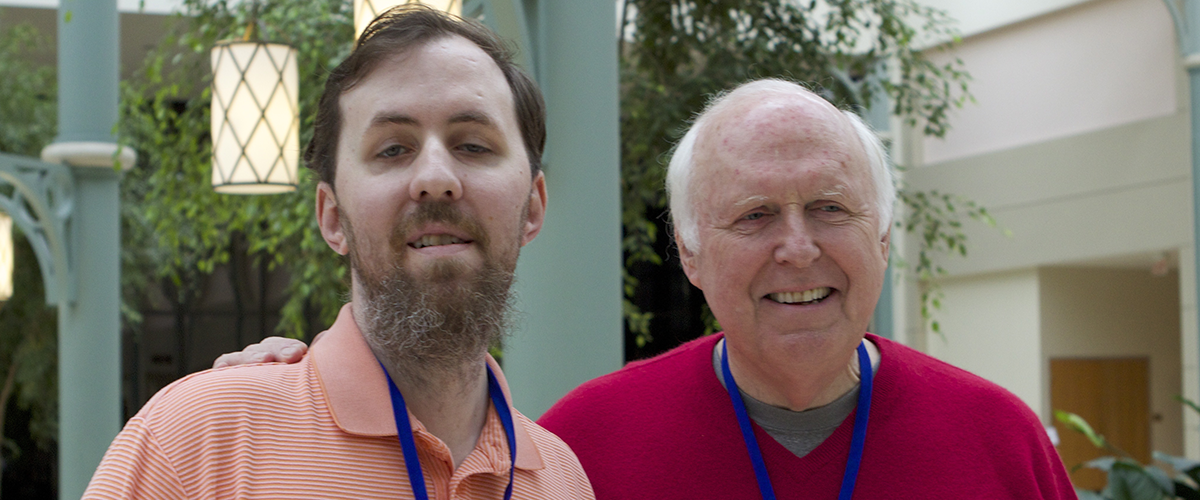This session offers a comprehensive look at the role of genetic testing and counseling in myotonic dystrophy type 1 (DM1). Learn about the testing process, how to interpret genetic results, the importance of working with a genetic counselor, and family planning considerations for those impacted by DM1.
Related Content
This session provides an essential understanding of Myotonic Dystrophy Type 2 (DM2), making it ideal for newly diagnosed individuals and those seeking to refresh their knowledge. Learn about the causes and genetics behind DM2, how the condition affects different systems of the body over time, and strategies for self-managing symptoms and building a strong clinical care team.
This session provides an essential understanding of Myotonic Dystrophy Type 1 (DM1), making it ideal for newly diagnosed individuals and those seeking to refresh their knowledge. Learn about the causes and genetics behind DM1, how the condition affects different systems of the body over time, and strategies for self-managing symptoms and building a strong clinical care team.
This session explores the importance of genetic testing and counseling for individuals and families affected by myotonic dystrophy type 2 (DM2). Learn about the testing process, the role of genetic counselors, the importance of testing for registries and natural history studies, and planning for future generations.
The Myotonic Dystrophy Foundation is excited to release the second video in our Understanding Myotonic Dystrophy series!
The Myotonic Dystrophy Foundation is excited to release the second video in our Understanding Myotonic Dystrophy series!
The Myotonic Dystrophy Foundation is excited to introduce Understanding Myotonic Dystrophy, a new series of short educational animations designed to edu
The Myotonic Dystrophy Foundation is excited to introduce Understanding Myotonic Dystrophy, a new series of short educational animations designed to edu
Originally presented on November 15th, 2024.
Originally presented on November 15th, 2024.
Learn more about the patterns, symptoms, diagnosis and treatments available for Genetic problems in CDM.
Learn more about the patterns, symptoms, diagnosis and treatments available for Genetic problems in DM2.
Learn more about the patterns, symptoms, diagnosis and treatments available for Genetic problems in DM1.
Join Certified Genetic Counselor Tiffany Grider from the University of Iowa for an recorded webinar on genetic testing.
Dr. Darren Monckton explains the current research concerning the significance of CTG repeats for persons with DM1.
...Is it larger with maternal transmissions? Or is there an identical distribution between men and women?
Myotonic dystrophy is an inherited disease where a change, called a mutation, has occurred in a gene required for normal muscle function. The mutation prevents the gene from carrying out its function properly.
DNA is the genetic material found in the nucleus of nearly every cell. A gene is a stretch of DNA that carries a set of instructions on how a protein should be made. These proteins carry out the functions of the body. Scientists estimate that humans have about 25,000 different genes.
Both DM1 and DM2 are passed from parent to child by autosomal dominant mutations. This means that the faulty gene is located on one of the chromosomes that does not determine sex (autosome) and that one copy of the mutated gene is enough to cause the disease (dominant).
Both DM1 and DM2 are passed from parent to child by autosomal dominant mutations. This means that the faulty gene is located on one of the chromosomes that does not determine sex (autosome) and that one copy of the mutated gene is enough to cause the disease (dominant).
Studies have been done to understand how these non-coding mutations could have a trans-dominant effect (i.e. how they could affect other genes not associated with the mutation locus). This research suggests a gain-of-function RNA mechanism underlies the clinical features common to both diseases.
Myotonic dystrophy is one of the most complex disorders known. In addition to the incredible variability of clinical symptoms, the disease also has unique mechanistic features:
Myotonic dystrophy is one of the most complex disorders known. In addition to the incredible variability of clinical symptoms, the disease also has several unique mechanistic features:
Dr. Matt Disney and Dr. John Day provide an overview of the DM2 disease mechanism and describe how compounds can be designed as potential therapies for this disease.
Dr. Darren Monckton describes anticipation, the process by which the disease increases in severity as it is passed from generation to generation, a unique feature of myotonic dystrophy.
Dr. Darren Monckton describes anticipation in myotonic dystrophy, the process by which the disease increases in severity as it is passed from generation to generation.

